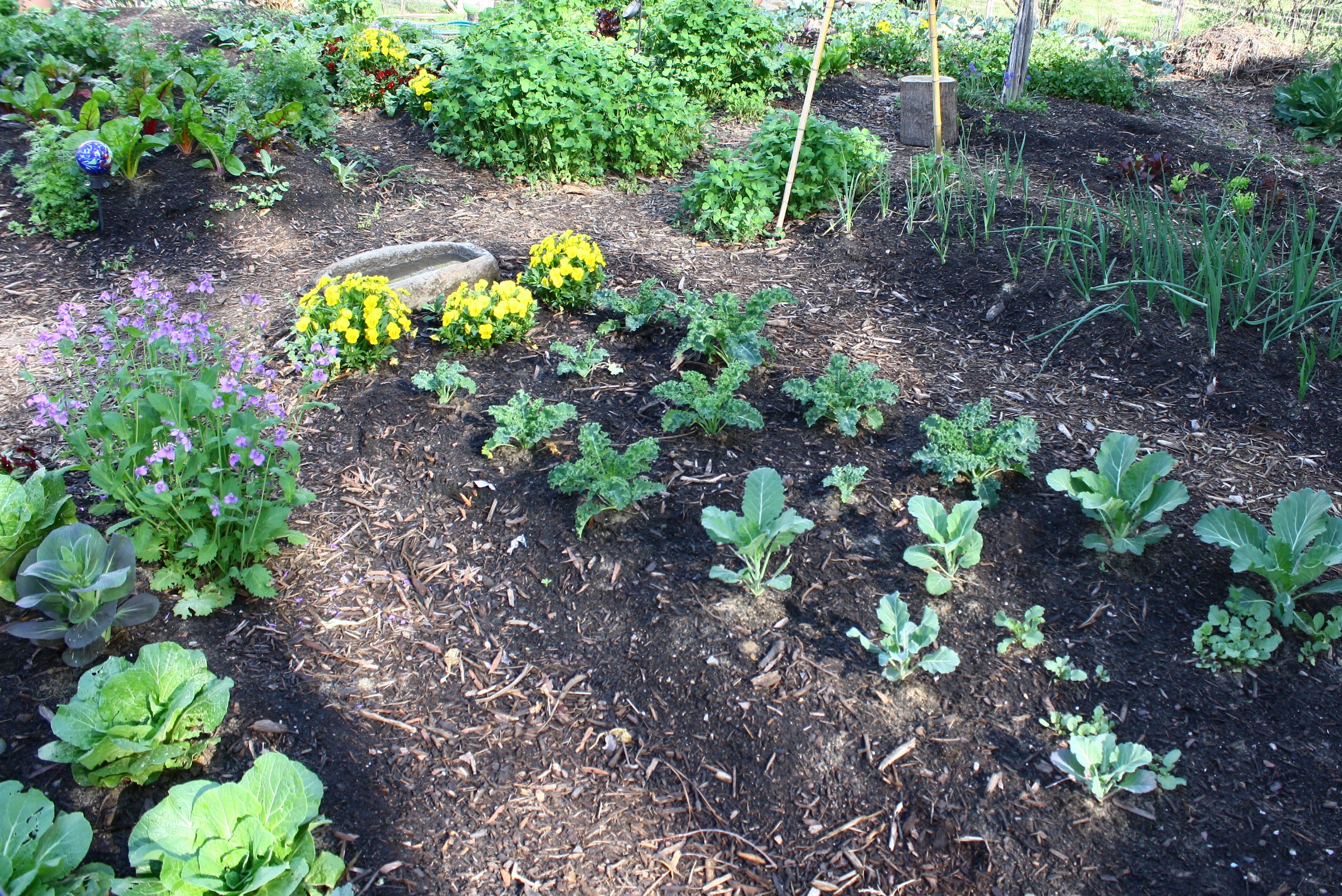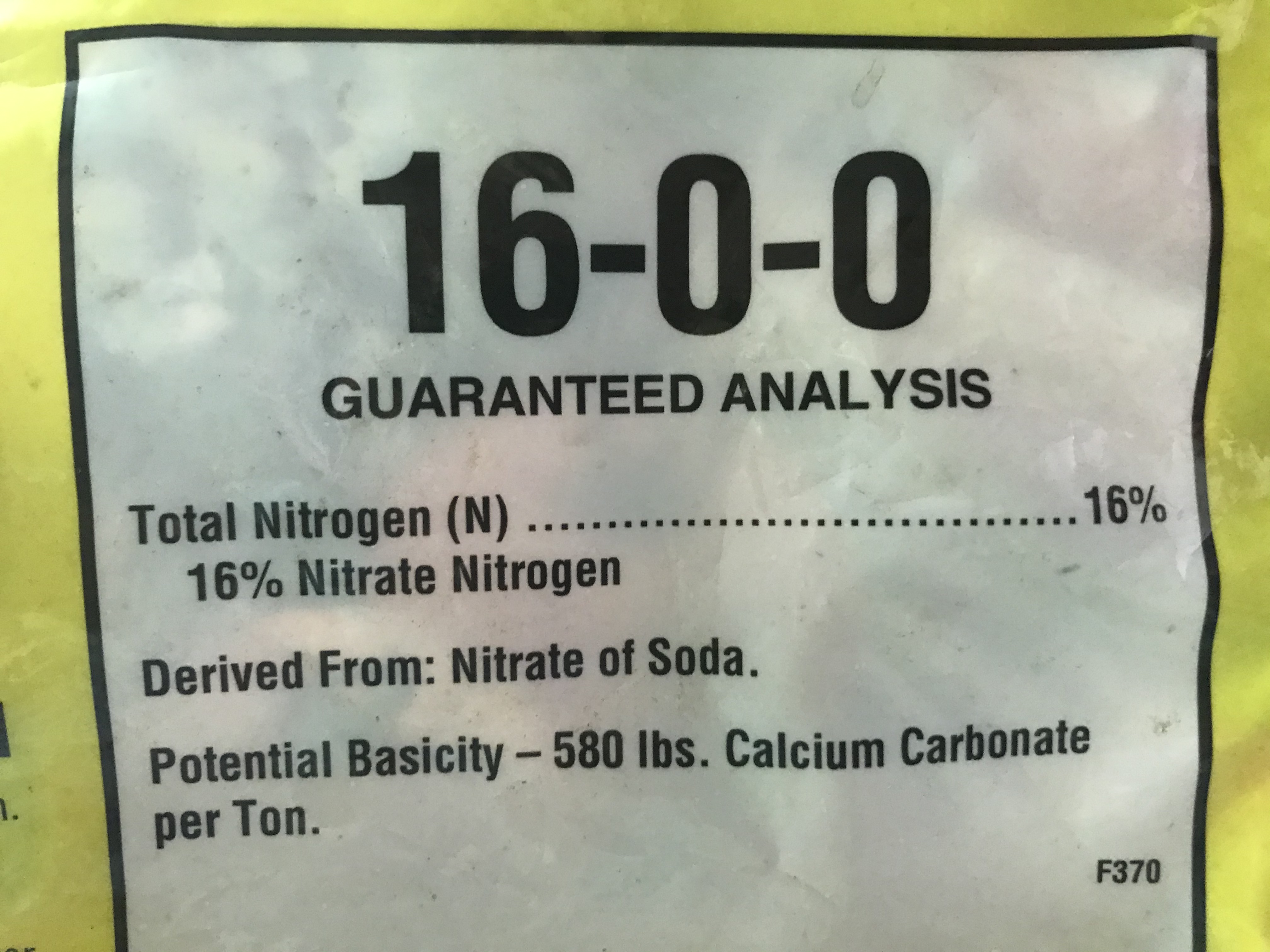Soil Testing and Choices of Amendments
go.ncsu.edu/readext?695699
en Español / em Português
El inglés es el idioma de control de esta página. En la medida en que haya algún conflicto entre la traducción al inglés y la traducción, el inglés prevalece.
Al hacer clic en el enlace de traducción se activa un servicio de traducción gratuito para convertir la página al español. Al igual que con cualquier traducción por Internet, la conversión no es sensible al contexto y puede que no traduzca el texto en su significado original. NC State Extension no garantiza la exactitud del texto traducido. Por favor, tenga en cuenta que algunas aplicaciones y/o servicios pueden no funcionar como se espera cuando se traducen.
Português
Inglês é o idioma de controle desta página. Na medida que haja algum conflito entre o texto original em Inglês e a tradução, o Inglês prevalece.
Ao clicar no link de tradução, um serviço gratuito de tradução será ativado para converter a página para o Português. Como em qualquer tradução pela internet, a conversão não é sensivel ao contexto e pode não ocorrer a tradução para o significado orginal. O serviço de Extensão da Carolina do Norte (NC State Extension) não garante a exatidão do texto traduzido. Por favor, observe que algumas funções ou serviços podem não funcionar como esperado após a tradução.
English
English is the controlling language of this page. To the extent there is any conflict between the English text and the translation, English controls.
Clicking on the translation link activates a free translation service to convert the page to Spanish. As with any Internet translation, the conversion is not context-sensitive and may not translate the text to its original meaning. NC State Extension does not guarantee the accuracy of the translated text. Please note that some applications and/or services may not function as expected when translated.
Collapse ▲Soil testing is the foundation for growing your plants and lawns as stress-free as possible! Soil testing not only ensures your plants have the correct soil pH and nutrient levels but also prevents excess fertilizers’ over-application and runoff into our waterways. Sample analysis at the N.C. Department of Agriculture and Consumer Services Agronomic Division is free from April through November, and from December to March, the cost is only $4 per sample.

Photo: Dr. Jeana Myers, NCSU
The primary information from the soil test is soil pH. This measures how acid or alkaline the soil environment will be for your plants. The pH scale runs from 0 to 14, above 7 is alkaline and below 7 is acidic. For most plants in North Carolina, we aim for a pH of 6 to 6.5. With our native soil pH generally in the 4.5 to 5.5 range, we often need to add lime to raise the pH. (Some exceptions, such as blueberries, thrive in acidic soils and should never be limed.) When the pH is too high (above 7) or too low (below 5.5), nutrients in the soil may be present but unavailable due to the chemical conditions. Keeping the pH in the 6 to 6.5 or 7 range allows for maximum uptake of soil nutrients into the plants.
In addition to correcting the pH with lime if recommended, the soil test will also tell you how much nitrogen (N), phosphorus (P), and potassium (K) to add to your lawns and gardens. Plants require other nutrients but need these three in the greatest quantities. Because N is water-soluble, it is not tested for in the lab, but you receive a recommendation as it is assumed you want to add N each year to enhance plant growth. P and K are measured in the lab, and the soil test results will recommend the appropriate fertilizer. For examples of soil test reports and other information about testing and fertility, see the Extension Gardener Handbook.
Mixed fertilizers are a combination of N-P-K, the most common being 10-10-10. This means the fertilizer is 10% of each nutrient (picture a 100 lb bag – 10 lb would be N, 10 lb P, and 10 lb K, with the remaining 70 lb being inert filler). Or if P is not needed, you may get a recommendation to use a 15-0-14 fertilizer. If both P and K are adequate in the sample, you may get a recommendation to use only N fertilizer. The soil test report contains this information to help you understand your results.

Nitrate of soda (16-0-0) contains 16% nitrogen. but does not contain phosphorous or potassium. Photo by Dr. Jeana Myers, NCSU
How to Take a Soil Sample
The quality of your results will completely depend on taking a good sample! Because soils have natural variability in pH and fertility, you want an average in any area. This means you take 10-20 samples (0-4” deep for lawn, 0-8” for tilled areas), mix them in a clean, plastic bucket, fill the soil sample box with this mixture, and label the box. Repeat this process in other areas where you want separate results – for instance, in the front yard or back, vegetable garden, or blueberry bed, or to compare areas where plants are thriving to areas where they struggle. Note where you took the samples so you can resample in that area next year if needed. It’s alright if the soil is damp, but do not put plastic bags inside the boxes! NOTE: If you plan to add compost, add it BEFORE soil testing, so you will know what, if any, additional nutrients will need to be applied.
For further instructions on soil sampling, see this video from the NC State Extension Homegrown in the Garden series.
Choosing Fertilizers and Amendments
You have choices in the type of lime you apply and whether you want to use mixed, single, chemical, or organic fertilizers.
Lime is produced as calcitic or dolomitic lime. The difference is that dolomitic lime also contains magnesium, which can be useful if magnesium levels are low. Pelleted, as opposed to powdered lime, is easier to apply, but both neutralize acidity slowly. Mixing lime into the soil helps speed the reaction. Planning for lime applications is worthwhile, as it can take several months for lime to raise the pH whether tilled in or surface applied.
The soil test report gives fertilizer recommendations for home landscapes as mixed fertilizers, but you can use these results and choose the type of fertilizer you prefer. On the back of the report are options for mixed fertilizers and the rates at which to apply them if you can’t locate the recommended first fertilizer. All recommendations and the mixed fertilizer options will deliver the same amount of nitrogen, 1 lb of N per 1,000 sq ft. P and K rates may differ, but the recommended rate of N will always be the same.
One difference between organic or natural fertilizers and chemical fertilizers is that most natural fertilizers take longer to become available to plants as they rely on microorganisms to break them down, whereas chemical fertilizers are processed into a form that is more soluble and readily available. Both organic and chemical fertilizers list the nutrient content on their labels, and you can calculate how much to apply based on the percentage of N, P, or K in the product and on the recommendations of your report.
Organic or natural options for fertilizers include feather meal, bloodmeal for N, bonemeal or compost for P, and muriate of potash, kelp, or wood ash for K. Fish emulsion is another popular fertilizer that can be watered into the soil around plants for a more readily available nutrient boost. Rock phosphate is a P source, but as a rock, the P becomes available very slowly, similar to the K in greensand. Compost may provide many of these nutrients, so it is important to apply it first and then soil test to avoid over-applications of nutrients.
Common chemical fertilizers include calcium nitrate, ammonium sulfate, or urea for N, di-ammonium phosphate for N and P, triple superphosphate for P, and potassium chloride or potassium sulfate for K. Pelleted slow-release fertilizers usually contain all three and can be useful for season-long fertilization of heavy feeders.
Composts and Mulches
Adding organic matter to our clay and sandy soils improves moisture retention, builds soil structure, and supports microbial populations. Some animal, food, or mushroom composts have very high nutrient levels and would be most suitable for heavy feeders such as vegetable crops. Leaf compost has moderate nutrient levels and can be worked well into the soil for vegetables or ornamental plants. Shredded hardwood and pine bark mulch work great for perennial landscapes, which can be top-dressed yearly to reduce weeds and conserve moisture. Annual soil testing is recommended for high-nutrient composts to avoid high fertilizer salts and zinc buildup.
Additional Resources:
NCDA&CS Agronomic Division Soil Testing
NC Extension Gardener Handbook
Growing Small Farms Soil and Fertility Management



